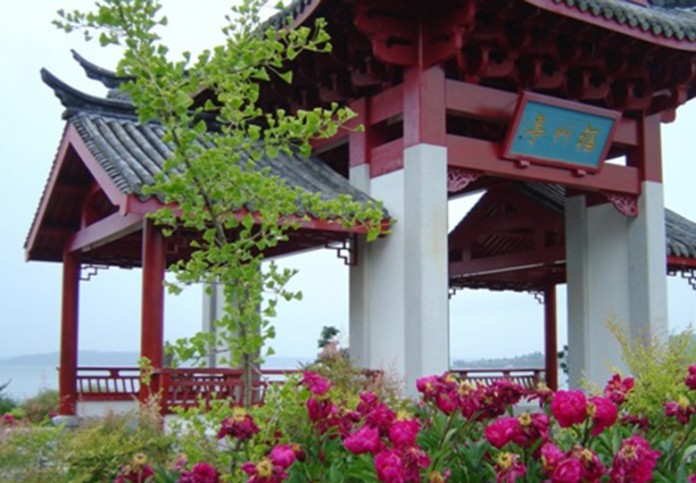By Carly Calabrese
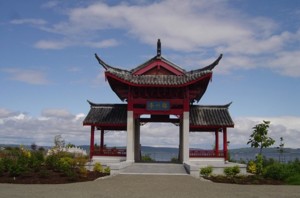
The Tacoma Chinese Reconciliation Park is a project headed by the City of Tacoma in collaboration with the Chinese Reconciliation Project Foundation. The purpose of the community-led reconciliation project is to acknowledge the 1885 expulsion of Tacoma’s Chinese citizens and to honor the commitment Tacoma has made since to end racism and hatred, and to promote a peaceful, multicultural community.
Tacoma’s anti-Chinese sentiment was fueled by the widespread economic depression of the 1870s that depleted the job market. Unemployed and frustrated workers blamed Chinese people for the depression because of their race, culture, willingness to work for lower wages, and because the Chinese denied themselves of recreations and lived frugally. Most Caucasians thought they had limited wants and desires and were an easy target to blame their woes on.
The “Tacoma Method” was developed to exile and remove the Chinese community from the City of Tacoma. A committee of 15 prominent citizens developed this method to expel the Chinese in a peaceful way without violence. The initiation of the plan began abruptly and all Chinese residents were informed they had to leave the city by or before November 1, 1885. Many public warnings, including displays of weaponry and threats to expose immigration violations, took place during the expulsion.
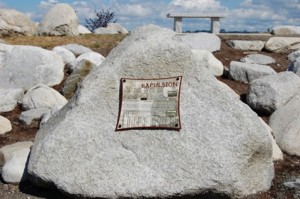
In response, Tacoma’s Chinese population sought justice for their expulsion in court. They enlisted assistance from Chinese merchants in San Francisco and convinced a federal prosecutor to issue indictments against 27 men, including Tacoma’s Mayor Jacob R. Weisbach, on charges of conspiracy and insurrection. The indictments issued in late 1885 were overturned, reinstated, and then overturned again in 1886. One of the charges had been dismissed because women illegally served on the grand jury. A new jury convened in 1887, but jurors refused to reissue the indictments and the 27 local men were never held accountable. Chinese were not seen in Tacoma again until the 1920s.
More than 100 years after the expulsion of Tacoma’s Chinese population, Tacoma’s Chinese Reconciliation Park serves as a reminder of the past and a vision for a brighter future. According to the master site plan of 2001, the Chinese Reconciliation Park design is a mixture of traditional Chinese style gardens with a beautiful natural waterfront setting. Designed by Joe Wai with the help of landscape architects J.A. Brennan and Associates and environmental graphic design team Tangram Design, the park exhibits a landscape of interpretive pathways that tells the compelling story in an appropriate and publicly sensitive manner.
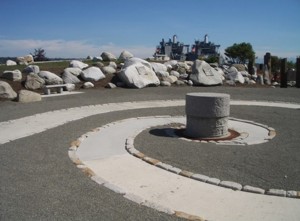
The master site plan was first developed in 2001, and the total project cost of $22 million is currently funded by approximately $10 million, with a funding gap of $12 million.
Lihuang Wung, senior planner for the planning and development services department for the City of Tacoma, commented: “I think the Tacoma Chinese Reconciliation Park is more than Tacoma, more than Chinese, more than reconciliation, and more than a park. It’s more than a park, because it is also an educational facility that provides a very unique learning experience; it’s more than reconciliation, because it really aims at promoting the community harmony and human values; it’s more than Chinese, because it is for people of all ages, ethnicities and cultural background; and it’s more than Tacoma because it truly is a regional park in Washington State with national and international significance.”
When asked who he recommended visit the Chinese Reconciliation Park, Lihuang replied, “Everyone. People within the local community and from all over the world should come and visit the park to learn about the unfortunate past in Tacoma’s history, to appreciate and support the reconciliation efforts by the Tacoma community, to enjoy the authentic features around the park and the spectacular scenic views surrounding it, and to meditate upon how we can all work together to continue to advance the common values of the community that we all treasure.”
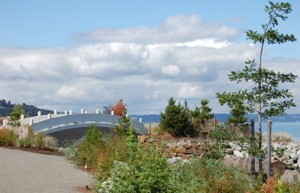
There will be an annual Chinese Reconciliation Project Foundation dinner and auction on Friday, March 6, 2015, at Bates Technical College, complete with food, wine, and company. The event is open to the public and includes information about upcoming plans for the park this year. A silent auction will also take place. Tickets are $60 each. Seating is limited and advance ticket purchase is required. For more information on this event, please call: 253-330-8828 or email: info@tacomachinesepark.org.
The Tacoma Chinese Reconciliation Park is located at 1741 North Schuster Parkway along Ruston Way.
All photos courtesy of Lihuang Wung/City of Tacoma.


































